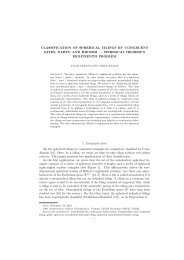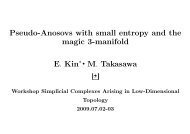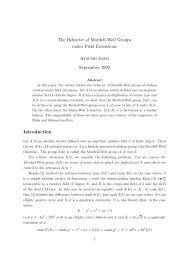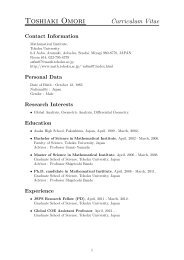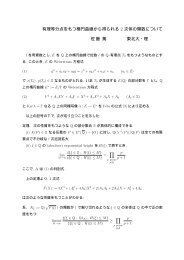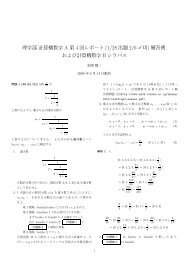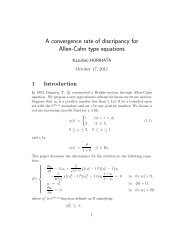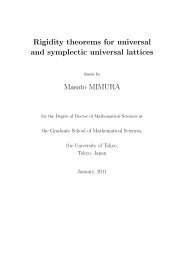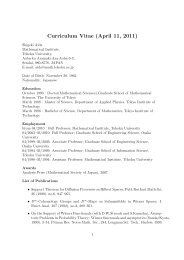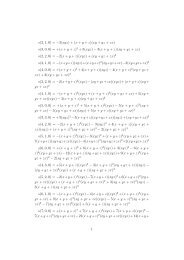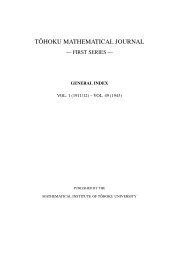Constructions of harmonic maps between Hadamard manifolds
Constructions of harmonic maps between Hadamard manifolds
Constructions of harmonic maps between Hadamard manifolds
Create successful ePaper yourself
Turn your PDF publications into a flip-book with our unique Google optimized e-Paper software.
56 CHAPTER 2. EQUIVARIANT HARMONIC MAPS<br />
there exists a global, strictly monotone increasing, and unbounded solution r = r(t) to the<br />
equation (2.2.4). Therefore, from Theorem 2.1.4, we obtain the following<br />
Theorem 2.3.4. (1) (i) A full equivariant <strong>harmonic</strong> map u : RH 6 → RH n exists for n =5<br />
or 8 ≤ n ≤ 20.<br />
(ii) A full equivariant <strong>harmonic</strong> map u : RH 7 → RH n exists for 12 ≤ n ≤ 27.<br />
(2) Let k ≥ 4.<br />
(i) A full equivariant <strong>harmonic</strong> map u : RH 2k → RH n exists for k 2 +k−12 ≤ n ≤ 2k 2 +k−2.<br />
(ii) A full equivariant <strong>harmonic</strong> map u : RH 2k+1 → RH n exists for k 2 +3k − 11 ≤ n ≤<br />
2k 2 +3k − 1.<br />
Note. From the eigenmap S 1 ∋ z ↦→ z k ∈ S 1 (k ∈ Z), we obtain an equivariant <strong>harmonic</strong><br />
map u : RH 2 → RH 2 . However, u is holomorphic or anti-holomorphic. Indeed, using the<br />
Poincaré disc model D 2 , it is given by D 2 ∋ z ↦→ z k ∈ D 2 .<br />
Case 2. Let f(t) = sinh t and h(r) =r. Then M and N are isometric to the real hyperbolic<br />
space and the real Euclidean space, respectively. Since these f and h satisfy the conditions<br />
in Theorem 2.3.3, there exists a global solution r = r(t) to the equation (2.2.4). Moreover,<br />
it holds that ∫ ∞<br />
dr<br />
h(r) = ∞.<br />
Thus, from Theorem 2.1.4, we obtain the following<br />
Theorem 2.3.5. There exists a family <strong>of</strong> equivariant <strong>harmonic</strong> <strong>maps</strong> from RH m+1<br />
R n(m)+1 , each <strong>of</strong> which has a bounded image.<br />
into<br />
Recently, Nagasawa and Tachikawa studied the case where<br />
∫<br />
√<br />
∞<br />
µ 2<br />
f 1 (t) +<br />
ν2<br />
dt = ∞,<br />
2 f 2 (t)<br />
2<br />
and proved, for example, the following



